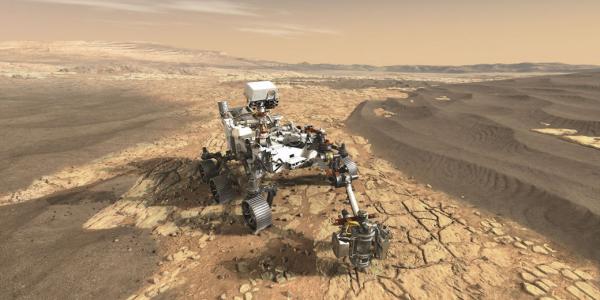St. Louis Astronomical Society Meeting: The Perseverance Rover Mission and the Search for Early Life on Mars
Raymond Arvidson, James S. McDonnell Distinguished University Professor, studies surface processes of planetary bodies and has been a team member of NASA orbiter, lander, and rover missions to Mars and Venus. He has published his research in over 250 scientific papers. Arvidson is also the director of the NASA Planetary Data System Geosciences Node. This facility archives and makes available images and data of solid surfaces gathered by all NASA missions to the global community of researchers and to the general public.
Mars is a very cold and dry world today, but it was much different in its distant past. NASA’s latest robotic surface explorer, the Perseverance Rover, successfully landed on Mars on February 18. The NASA Exploration Program focuses on characterizing the early warm, wet conditions on Mars and searching for evidence for early life. This includes the Perseverance Rover Mission, designed to collect rock cores from an ancient river delta deposited in a lake that once filled Jezero Crater. Cores would be returned to Earth by a subsequent mission, allowing records of ancient life to be explored in great detail in various laboratory settings.
The St. Louis Astronomical Society is an organization for individuals interested in astronomy and telescopes. The public is invited to attend its meetings, telescope observing sessions, and special events. For more information about Astronomical Society events, please visit www.slasonline.org or call 314-962-9231. The event, cosponsored by NASA's Missouri Space Grant Consortium, is open to the public free of charge.
To get the link to the Zoom meeting if you are a non-member of SLAS, simply send a request to contactus@slasonline.org.

